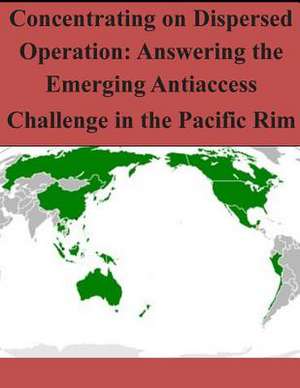Concentrating on Dispersed Operation
Autor Air University Pressen Limba Engleză Paperback
Preț: 86.47 lei
Nou
Puncte Express: 130
Preț estimativ în valută:
16.55€ • 17.69$ • 13.80£
16.55€ • 17.69$ • 13.80£
Carte disponibilă
Livrare economică 28 martie-11 aprilie
Preluare comenzi: 021 569.72.76
Specificații
ISBN-13: 9781502959478
ISBN-10: 150295947X
Pagini: 82
Dimensiuni: 216 x 279 x 4 mm
Greutate: 0.21 kg
Editura: CREATESPACE
ISBN-10: 150295947X
Pagini: 82
Dimensiuni: 216 x 279 x 4 mm
Greutate: 0.21 kg
Editura: CREATESPACE
